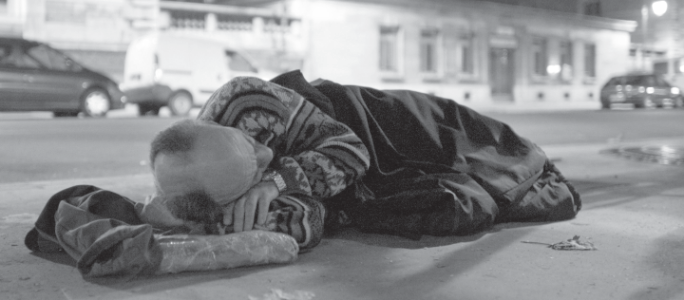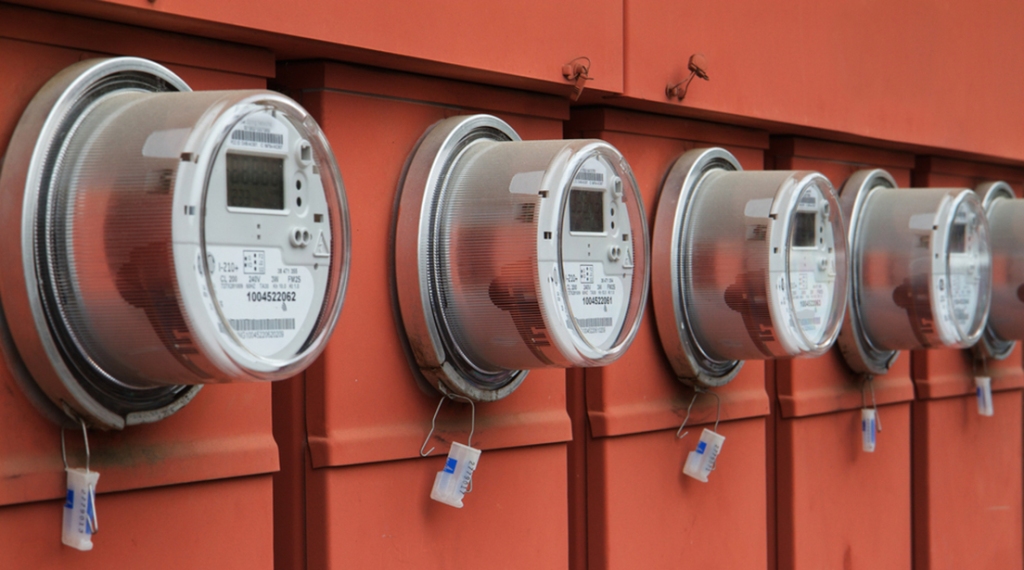A group is forming at my neighbor’s beautiful three-bedroom apartment in Hollywood, California.
I enter cautiously… because even though I’ve lived two-doors down for the past two years, we’ve never met.
As the place fills in with others, it dawns on me: This neighborhood-watch meeting is not your normal get together.
That’s because a few blocks away an unlicensed sober-living facility just opened.
The owner now living next door to this new facility is here tonight. He’s not the first to talk. First, we listen to a member of our city council explain the current housing laws.
The Americans with Disabilities Act (ADA) protects many from prejudice when buying a home. It’s a good law, and it was crafted with the best of intentions.
Unfortunately, some unlicensed sober living facilities use those best intentions as a loophole to create unsupervised, self-governed and overfilled halfway homes.
You might imagine the value of that neighbor’s home taking an immediate nosedive. And he had just put in a pool… “sweat equity,” he said.
First, a Caveat
It should be said: not all sober living homes are bad. Not all facilities engage in objectionable practices. Not every single location is appalling.
But there are many across the entire country fitting that bill.
It should also be said that the portion of our society struggling with addiction deserves our attention, respect and compassion. These are human beings just like the rest of us and deserve protection under the same laws as everyone else.
I do not mean to vilify those looking for help. My concern is unlicensed sober-living proprietors abusing legal loopholes to spread substandard living conditions to bucolic neighborhoods across the nation.
It’s an unfortunate roll of the dice that lands one of these businesses next to your home. And there is very little legal recourse for a homeowner to recover that sudden dip in property value if that nearby facility turns foul.
Companies Profit on Sober Living?
Yes. The goal: find a quiet, tucked away single-family home that is near but removed from the environment the recovering addict is escaping. So, by definition, proprietors of these facilities target desirable residential neighborhoods.
Essentially, these businesses open up shop in the same areas that most homeowners consider a great place to raise a family.
This has created a decades-long fight between homeowners and municipalities in an attempt to define operational parameters and create stronger oversight governing how these sites are run.
Laws as They Stand
Currently, there are few laws regulating the location, quality and acceptable staffing of these group homes.
A statement released in August of 2006, by the County of Los Angeles’ Chief Administrative Office states, “Sober living homes do not require licensing and consequently are unregulated as such… These facilities sometimes come to the attention of code enforcement personnel due to associated code violations relating to unsanitary and substandard housing conditions.”
This means there will be no intervention until the property falls far enough into disrepair as to be deemed unsanitary and substandard.
This should make any neighbor’s skin crawl.
Especially those who aren’t too keen on seeing the neighboring property repurposed for this use, knowing full well that nothing can be done until it falls into squalid disrepair.
The reason the legal avenues are restricted to combat the proliferation of these sober-living group homes is due to their protection under the Fair Housing Act (FHA) and the Americans with Disabilities Act (ADA).
Moreover, the regulations enforced on residential-care facilities do not apply since the legal definition of a sober-living home specifically omits any on-site medical assistance.
The Department of Alcohol and Drug Program’s (DADP) fact sheet explains, “[Sober-living homes] are not required (or eligible) to be licensed, and are not subject to Department of Alcohol and Drug Program [DADP] oversight and regulatory requirements.”
This shifts enforcement of these homes from DADP to the Department of Social Services (DSS), which means reasoning to evict falls along similar guidelines as ousting your average homeowner.
But, since the occupants of sober-living homes are legally defined as disabled there are many additional protections provided to them under the law.
And rightfully so.
Those with disabilities may not have the means to protect their own rights. However, I’ve found that it’s not the afflicted that are truly at fault when sober-living group homes veer towards squalid.
It’s the proprietors.
Single-family homes are not meant to house 10-12 unrelated individuals. In many cases, occupants share one bathroom. Garages become used as additional bedrooms, and bunk beds litter the living room.
This all makes these homes seem like high-priced dorms with grown men packed in like sardines. This is a far cry from what is truly needed for recovery: The comforting respite from addiction.
And it’s true that the improperly run facilities are in the minority, but this is a noisy minority.
In 2007, Los Angeles City Council passed an ordinance limiting sober-living facilities to six occupants, by updating zoning definition of family related to the residential use of the property. The ordinance also forces the operator to apply for a reasonable-accommodation permit, regardless of tenant count.
This ordinance had gone mostly unenforced until late 2012. On the night of November 1, a sober living group home on El Sereno Avenue in Pasadena erupted in flames claiming the lives of two men and severely injuring another while also doing $1.35 million in damage to both neighboring residences.
This event renewed interest in addressing the legal recourse for group houses stricken with substandard living conditions. However, interest alone will not change the federal laws protecting these unlicensed facilities from operating in their current form.
Currently, the FHA states that homeowners cannot disclose the existence of nearby facilities.
Soberlivingcertification.com uses this analogy: “It would be just as wrong to tell a prospective home buyer that there is a sober living home nearby as it would to say there is a person with AIDS in the neighborhood or an African American family living next door.”
The justification is sound, but it puts the responsibility on any prospective homeowner to do exhaustive research on their new neighborhood before entering escrow.
So, what’s really going on?
Again, it should be said that not all sober living facilities operate this way.
Some homes are a welcome relief from the alleys where these addicts are sure to return if not given a chance to right the wrongs in their life. However, this topic has become such a hot button issue due to the cases of things going sour.
This means that it is often hard to start a dialogue about sober-living facilities at all.
But one specific nationwide sober-living facility business, Oxford House, is laying the legal groundwork through court cases that only muddies the discussion.
In the 1992 court case Oxford House, Inc. v. Township of Cherry Hill (CIV. No. 92-1150) the plaintiff presents itself as such:
“Oxford Houses are not health care facilities, rehabilitation centers, or supervised halfway houses. They are simply residential dwellings rented by a group of individuals who are recovering from alcoholism and drug addiction.”
Part of the company structure includes the stipulation that the facility must be “democratically self-governed by its residents.”
Another major component in their self-description includes an important distinction:
“No professional treatment, therapy, or paid staff is provided. Unlike a boarding house, where a proprietor is responsible to run and operate the premises, at Oxford House, the residents are responsible for their own food and care as well as for running the home.”
Oxford House claims that in the event that someone relapses into use of drugs or alcohol, they are to self-evict.
Wait right there.
A completely self-governed facility with zero oversight is somehow meant to expel those that relapse. Essentially Oxford House, which has a nationwide footprint of 1,607 homes in 45 states, is requesting relapsing drug addicts to use the honor system and just decide to leave if they break their sobriety.
And go where?
Since the occupants are protected under the FHA’s definition of the disabled, Oxford House won its suit against the Township of Cherry Hill and remained open and unregulated.
This same logic is used all across the country. No medical assistance, no onsite staff, no government oversight.
Mind you, Paul Molloy, Oxford House CEO, admits that their success rate is right around 75 percent.
This leaves a 25 percent chance that the largest network of these unlicensed homes could become a nuisance in your neighborhood should they open one near you.
“You can’t take the newly recovering person and put them in the crack neighborhood where they were using crack. You gotta open houses and rent houses in good neighborhoods,” Malloy adds in his interview with 60 Minutes.
I do not mean to suggest that those in need don’t deserve all the help they can get. But, any rational person would concede that a sober-living home protected by both the FHA and ADA should also include some stipulation concerning oversight and accountability.
Because there currently is none.
Oxford House’s victory in court was three decades ago, yet the systemic abuse of this legal loophole remains to this day and continues across the nation.
What’s being done now?
This topic has once again resurfaced in Los Angeles. In 2011, Councilman Paul Koretz painted a picture of the true concern of homeowners and parents.
“We had a young family who lived next to a group home and, one day, someone climbed a fence and went into their backyard where their daughter was,” Koretz explained. “When I went door-to-door, people told me they were moving out because of that. The process we have in place doesn’t work.”
Drafted in 2011, the Los Angeles City Council presented the Community Care Facilities Ordinance (CCFO) to help curtail what Los Angeles resident Sharon Pierce considers “…a vastly profitable illegal business that has been untouchable.”
While that ordinance aimed to solve some of the headaches currently plaguing homeowners, it was deemed too invasive.
Councilman Richard Alarcón put it this way, “This ordinance is throwing the baby out with the bathwater and will have an extremely negative impact on the people we want to help.”
Ultimately, the ordinance was sent back to committee in January of 2013, and has yet to re-emerge.
Where do we go from here?
This contentious subject is sure to elicit emotional support on both sides of the argument.
We should all be able to agree that recovering addicts and alcoholics deserve the respect of their fellow citizens. They deserve a place to emerge from the throes of their addiction and return to being functional members of society.
Without safe havens and a place to call home it would be very easy for most to return to their old habits.
Hopefully, we all would agree that something needs to be done. However, the predominant not-in-my-backyard mindset prevents many from seeing the forest for the trees. And that is understandable. Homelessness in Los Angeles is officially a state of emergency, with 28,852 unsheltered residents at last count.
We must understand the need to protect both neighboring homeowners and those recovering from addiction.
There needs to be an understanding that money is being made on the backs of those looking for a way out, so protection and oversight is a must.
We need to ask our representatives to approach this problem head on. While these unlicensed facilities may take advantage of legal loopholes, they speak to a larger need that should remain protected.
Now it’s time to actually approach the problem with care and compassion. Because this is already in our backyard.






